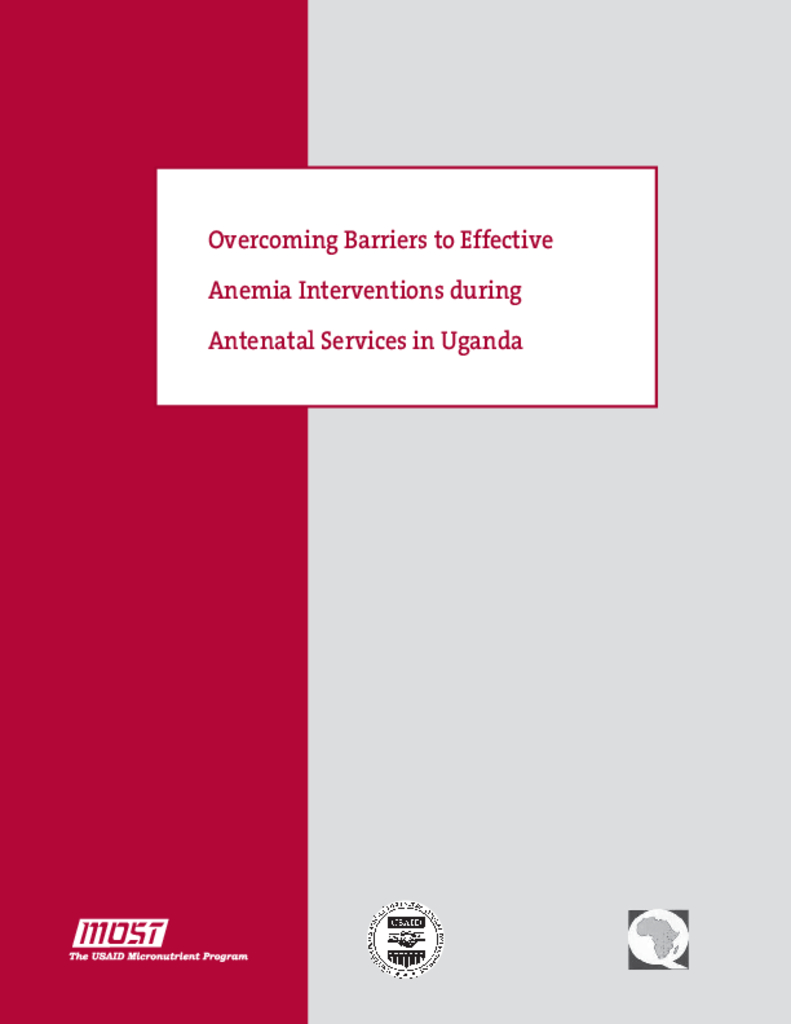
Overcoming Barriers to Effective Anemia Interventions during Antenatal Services in Uganda
Health Risk Environment
Description
Anemia is a major public health problem worldwide. It affects mainly preschool children and pregnant women in low-income countries. At the global level, anemia prevalence is over 30%. In sub-Saharan Africa, anemia prevalence levels are not well documented due to inadequate and insufficient techniques used to estimate anemia in the population. However, according to the World Health Organization (WHO), anemia prevalence among pregnant women in sub-Saharan Africa is estimated at 50%. Most of the anemia is associated with an imbalance between iron intake, utilization and loss that leads to iron deficiency. Malaria, hookworm infestation, deficiency in other nutrients such as vitamin A, folic acid, and B12, and, to some extent, HIV/AIDS, are also important co-factors in sub-Saharan Africa.
